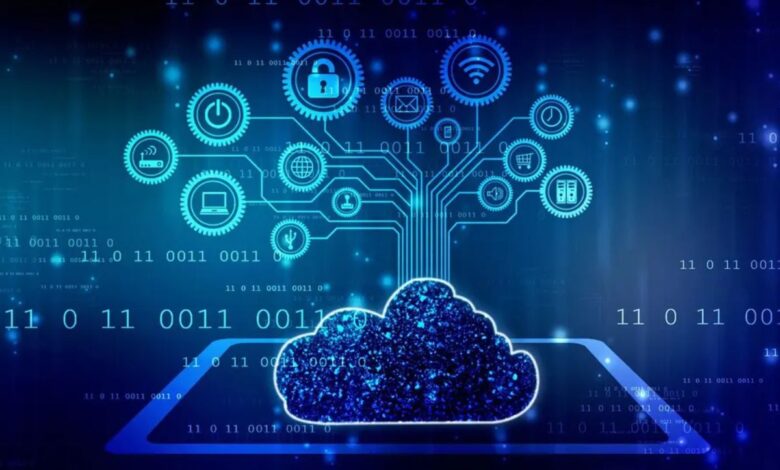
Digital economy playing major role in boosting India’s growth, says finance ministry
NEW DELHI : High-frequency indicators such as Goods and Services Tax (GST) collection, e-way bills, Purchasing Managers’ Index (PMI) for manufacturing, and PMI services are carrying forward the growth momentum in July-August 2023
Along with the physical economy, the digital economy is also playing a major role in promoting India’s economic growth, the Union finance ministry said on Friday, adding that it is comfortable with the 6.5% real gross domestic product (GDP) growth projection for FY24 with symmetric risks.
“Digitalisation is expected to serve as a critical and distinguishing feature in unfolding India’s growth story in the 21st century,” the finance ministry said in its monthly economic report released on September 22. India’s GDP growth in the quarter ending June (Q1) was 7.8%. The Reserve Bank of India (RBI) in August projected a growth rate of 6.5% for 2023-24 with quarterly growth numbers being 8% in Q1, 6.5% in Q2, 6% in Q3and 5.7% in Q4.
Risk factors include rising crude oil prices, the monsoon deficit in August that could impact both Kharif and Rabi crops, and global stock market corrections, according to the report. “However, it is heartening that rains in September have erased a portion of the rainfall deficit at the end of August,” it said, enumerating bright spots such as corporate profitability, private sector capital formation, bank credit growth and construction sector activities. “In sum, we remain comfortable with our 6.5 per cent real GDP growth estimate for FY24 with symmetric risks,” it added.
High-frequency indicators such as Goods and Services Tax (GST) collection, e-way bills, Purchasing Managers’ Index (PMI) for manufacturing, and PMI services are carrying forward the growth momentum in July-August 2023, the ministry said. GST revenue mark in August was over ₹1.59 lakh crore, an 11% year-on-year jump. E-Way bills in August touched a record 93 million. Electronic way bills are part of digital compliance mechanism under the GST regime to track movement of goods, indicating business activities.
Similarly, the average PMI manufacturing in July-Aug 2023 was 58.1 compared to 56.3 in the corresponding period last year. The average PMI services in July-August was 61.2 as against 56.3 in the same period previous year. A PMI value greater than 50 signifies expansion in economic activity in these sectors.
“Along with the physical economy, the digital economy is also playing a major role in promoting India’s economic growth,” the report said, adding that India’s pace of digitalisation has been very high in recent years compared to developed countries. “Digitalisation is expected to serve as a critical and distinguishing feature in unfolding India’s growth story in the 21st century,” it said, pointing to the impact on huge savings and formalisation of the economy.
The report said India’s unified payment interface (UPI), a real-time digital payment system, has revolutionised digital payments in the country, leading to savings of about ₹5.50 lakh crore in approximately seven years. Citing a study by the World Economic Forum, it said, up to February 2023, approximately ₹300 lakh crore has been transacted through UPI since its inception in April 2016. If this amount had not been transacted through UPI, it would have cost the economy approximately ₹5.50 lakh crore – ₹7.2 lakh crore depending on the alternatives such as cash, credit cards and debit cards. The digital economy’s contribution to India’s GDP has increased from 4-4.5% of the GDP in 2014 to 11%, and is expected to cross 20% by 2026, the ministry said.
The report said “India’s economic outlook for FY24 remains bright” as high-frequency indicators suggest that “the second quarter of FY24 is shaping up well too” and the monsoon deficit of August has been partially plugged in September. “Prices of selected food items that drove the inflation rate above 7% in July are on the retreat. Private sector is in good health as data on advance tax payments for second quarter confirm. They are investing.”
The recent run-up in oil prices is an emerging concern, it said. India’s average crude oil purchase price (Indian basket) crossed $95 a barrel mark on September 15 from $75 four months ago. India imports about 87% crude oil it processes and pays in dollar. “The risks of a stock market correction and geopolitical developments could potentially hurt investment sentiment in the second half of the financial year,” the report pointed at other headwinds. “But, the impact of these developments on underlying economic activity in India should be relatively contained.”
